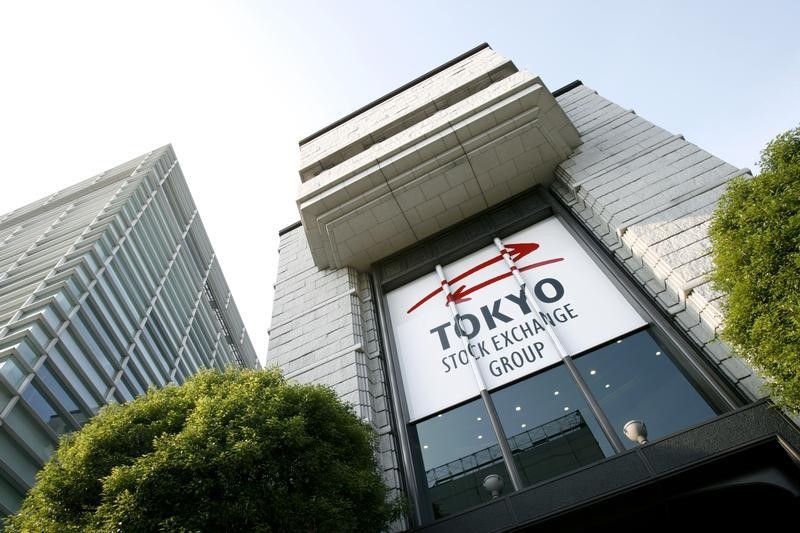* Nikkei down 0.2 pct, Chinese, Aussie shares in the red
* Futures signal positive start for Europe, E-Minis flat
* Dollar near four-month highs vs yen, near six-month top vs euro
* Oil around 2014 highs after Venezuela's presidential elections
By Swati Pandey
SYDNEY, May 22 (Reuters) - Asian shares skidded on Tuesday as a strong dollar sapped demand for emerging market assets while surging oil prices stoked concerns about a flare-up in inflation and faster U.S. interest rate increases.
Europe was set for a muted start, with futures for London's FTSE index FFIc1 and the Eurostoxx 50 STXEc1 up 0.1 percent each but E-Minis for the S&P 500 ESc1 were flat.
Japan's Nikkei .N225 ended 0.2 percent lower and Australian shares .AXJO fell 0.7 percent. Chinese stocks were in the red too with the blue-chip CSI300 .CSI300 off 0.5 percent.
Liquidity was relatively thin due to holidays in South Korea and Hong Kong.
Even though most major Asian markets edged lower, MSCI's broadest index of Asia-Pacific shares outside Japan .MIAPJ0000PUS managed to eke out a small 0.17 percent gain.
The index is well below an all-time peak of 617.12 points hit in January, and is flat so far this year after a super-charged 33.5 percent gain in 2017.
"We are seeing U.S. dollar strength and that is causing money to flow out from emerging markets to the U.S. There is some sort of risk aversion going on," said Yoshinori Shigemi, global market strategist at JPMorgan (NYSE:JPM) Asset Management.
"People are cautious about taking exposure in emerging markets."
Those concerns offset the boost to sentiment from overnight gains on Wall Street over the apparent reconciliation between the United States and China over import duties. said investors in the region were worried about the growth outlook, with the U.S. Federal Reserve staying on its policy tightening path.
"Stocks have rallied several times on the belief that trade tensions were easing, only to fall back down as investors took the opposite view," said James McGlew, executive director of stockbroking at Perth-based Argonaut.
"While the global economy remains robust and first-quarter earnings have been strong, stock markets have mostly traded sideways this year because many investors have started to fear that the pace of the expansion has already peaked."
JPMorgan's Shigemi said investors will now turn their focus to the next Fed meeting on June 13 where it is widely expected to raise rates for a second time this year. FEDWATCH
A total of three hikes is almost fully priced-in by the market for 2018 although some investors expect the Fed to be more aggressive.
It was the fear of higher inflation and thus faster Fed rate rises that caused a bond market rout earlier this year, sending yields sharply higher and triggering a share market sell-off.
CURRENCIES AND OIL
The dollar hovered near five-month highs against a basket of currencies, boosted by the U.S.-China trade optimism.
The dollar index .DXY was last down 0.1 percent at 93.56 from Monday's top of 94.058.
The euro EUR= eased to $1.1777, within spitting distance of a more than six-month trough of $1.1715 touched on Monday amid continued political risk in Italy.
Italy's far-right League and the 5-Star Movement agreed on a candidate to lead their planned coalition government and to implement spending plans seen by some investors as threatening the sustainability of the country's debt pile. 10-year bond yield IT10YT=RR jumped 8 basis points in early trades on Tuesday to hit a fresh 14-month high of 2.418 percent.
The Japanese yen JPY= steadied near four-month lows at 111.05 per dollar, while sterling GBP= eased 0.1 percent to $1.3416 as investors prepared for key data that could determine whether the Bank of England raises rates in 2018. oil prices soared to their highest since 2014 after Venezuela's presidential election heightened worries that the country's oil output could fall further. market is also weighing the possibility of additional U.S. sanctions on the country.
U.S. crude CLc1 added 26 to $72.50 per barrel and Brent LCOc1 rose 19 cents to $79.40.
The combination of higher oil and conciliatory actions on the US-China trade front boosted the Australian dollar AUD=D4 , a liquid proxy for risk, to a one-month peak.
As the dollar strengthened, gold prices XAU= eased to stay near the lowest since late December at $1,289.68. MSCI and Nikkei chart
http://reut.rs/2sSBRiD Equities and bonds total return index, USD
https://reut.rs/2GEwt8u
^^^^^^^^^^^^^^^^^^^^^^^^^^^^^^^^^^^^^^^^^^^^^^^^^^^^^^^^^^^> (Editing by Sam Holmes & Shri Navaratnam)
